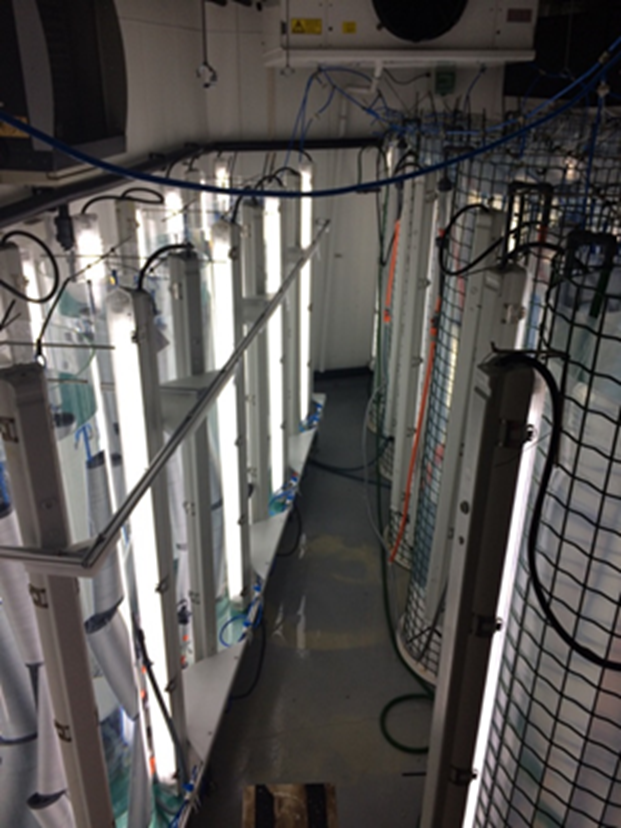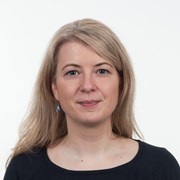SINTEF ACE
The infrastructure consists of salmon farming sites at four locations along the coast of Mid-Norway. This allows for experiments at different degrees of exposure, and during different times in the production cycles (i.e. age of fish). SINTEF ACE is integrated in the SINTEF e-infrastructure for secure and controlled access to laboratory facilities, allowing e.g. on-line access to sensors and actuators, and remote configuration, monitoring and operation of equipment.
The sites are within three hours driving distance from Trondheim, with a 5-30 minute boat ride.
Access modalities
On average, each user or user group is expected to stay 8 - 15 days in total at the infrastructure. The duration of work is flexible, depending on the project requirements. The available e-infrastructure will allow a user to limit the physical presence at the facility. As an example, this will allow users to visit SINTEF ACE to deploy equipment at the start of an experiment, monitor the experiment remotely for a period of time and then come back for, for example, sampling or demounting at the end of the experiment.
Support offered
1) Assistance in detailed planning of the experiment, setting up equipment and software for data capture and storage, risk analysis (fish welfare and HSE) and allocation of resources
2) Assistance from technicians and researchers, vessels, robotic systems, sensors, equipment, maintenance and monitoring of equipment and data capture
3) Dismantling of equipment, data assembly and transfer
Support includes transport between shore and farming sites, necessary safety equipment and clothing for operations at sea. On-site installation of equipment will be done by the technical support staff. Environmental and operational data will be made available. Scientific and technical support includes further appropriate sampling and conservation of samples. In addition, video conferencing will be available, enabling visiting scientists to communicate during experiments.


More information about our infrastructures can be found through these links:
Norwegian Seaweed Technology Centre (NSTC)
The Norwegian Seaweed Technology Centre (NSTC) is a knowledge platform for technology development within the industrial cultivation, harvesting, processing and application of seaweed in Norway. The centre has a licence for cultivating seven different macroalgae species: Saccharina latissima, Alaria esculenta, Laminaria digitata, Palmaria palmata, Porphyra sp., Chondrus crispus and Ulva lactuca. NSTC is composed of the NSTC-Sealab and NSTC-Seafarm.
NSTC-Sealab is a laboratory for macroalgae cultivation in Trondheim, comprising of 1) A climate room with light control for vegetative cultivation or sorus induction, 2) a climate cabinet used for gametophyte cultivation, 3) seedling cultivation rigs in climate rooms with light control and equipment for the seeding of substrates and mechanical transfer of seeded twine to carrier ropes. The laboratory is supplied with filtered, UV-treated, nutrient-rich 8-12°C seawater from a 70m depth intake in the Trondheimsfjord holding nutrient-rich conditions year-round (148 μg NO3–N L−1, 20 μg PO4–P L−1).
NSTC-Seafarm consists of two field sites on the coast - one at the island of Hitra, characterised by being partly sheltered against waves but with strong currents, and the other, focusing on the cultivation of macroalgae, integrated with the two 5000t salmon farms at the SINTEF ACE locations on Frøya. These are characterised by an exposed/semi-exposed location in open sea with strong water currents. The latter allows for cultivation of macroalgae close to the salmon farm to exploit the nutrient rich effluents from this (IMTA/integrated multitrophic aquaculture). The sites have mooring suitable for the fastening of longlines and seeded cultivation substrates such as seeded droppers, continuous lines, nets or sheets. The water quality is good for cultivation of kelp and red algae regarding nutrients, light and temperature.
The NSTC laboratory is well equipped for cultivation trials throughout different stages of the life cycles of the licensed species, which have been selected because of a commercial interest. The lab is well suited for research on seaweed hatchery challenges and vegetative cultivation of red and green species. The research environment has a strong focus on upscaling the methods developed in this infrastructure and is continuously working to improve and possibly automatise different operations.


Access modalities
The duration of work is flexible, depending on the project requirements. Use of the NSTC-Seafarm requires production of seedlings in the NSTC-Sealab. At the NSTC-Sealab, a typical trial will run for 4-6 weeks, where the user stays the first and last week. The field sites at the NSTC-Seafarm are suited for cultivation trials that can last for several weeks or months, and in such cases, it is expected that the user will be physically present at least two times: at start-up and during running or termination of the trial.
Support offered
Assistance will be offered to users by experienced scientists and technicians for experimental design of macroalgae cultivation trials. Technical support for daily experimental work and technical help for samplings will be provided to the users, including logistic support (vessel) for field work. Follow-up of the experiments between start-up and termination, i.e. when the users not are present, will be done if required.
More information about our infrastructures can be found through these links:
About NSTC
AQUAEXCEL3.0
More info regarding TNA
AQUAEXCEL3.0 TNA Information
Contact for SINTEF ACE
Contact for NSTC

